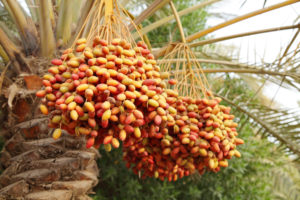Biodiversity of Date Palm Trees

The biodiversity of date palm and other palms in the Andes can be considered to be incomplete. The main reason for this is that, although it is one of the last remaining subspecies of palms that grow wild in the continent, it is critically endangered in its native range. Less than ten percent of the palm’s natural range is left available for cultivation and a similarly low level of tourism has resulted in a decline in the number of local people who are aware of the importance of preserving the species.
While conservation efforts have had some success, the long term outlook for these species is dim. The palm is unique among tropical trees in that it is the only one of its kind in the Andes Mountains. It is also one of the most solitary tree types in the area and lacks any true territorial territory. When it does choose a spot on a tree, it usually ends up on the less explored side of a cleft where there are few plants or vegetation of any sort. This means that the date palm is vulnerable to both human intrusion and pressure from other flora and fauna that want to take over the limited range of the species. It is likely, therefore, that the species will disappear from areas outside of the high mountain interior within the next few decades.
One way that the preservation of the species can be helped is by encouraging the development of tourism. Many Andean countries have little natural tourism so they rely on outside companies to assist them in the conservation of their local wildlife. Typically these companies provide seedlings, medicinal plants, and ornamental crops for the palm and other trees. They also plant flowers, shrubs and bushes in the locations where the date palms grow. The idea is that local people will be able to take advantage of the flowers, fruits and other plant life and help increase the diversity of the native species. The result is an increase in the amount of wild date palm that can be seen on a daily basis.
Other experts believe that the rapid expansion of the date palm cultivation methods is creating a huge dilemma for the wildlife of the Andes mountains. One reason that cultivation techniques are expanding fast is that they are much cheaper than the approaches used in the past. In addition, many people have started to realize that these methods are good for business because cultivation requires far less land than is needed by wildlife. Palm plantations can easily handle and even produce a greater diversity of these plants. Unfortunately, the rapid expansion is also likely to destroy habitats of the Andes wildlife. If nothing is done, it is estimated that up to twenty percent of the Andes’ forests could soon be destroyed through unsustainable palm farming.
Some companies have begun conserving the Andes’ palm tree habitat by using methods that promote biodiversity and farming. For instance, in Peru, the Peruvian government has worked with organisations that promote biodiversity and farming. The aim is to preserve the species and increase their numbers. The aim of these programmes is to ensure that high quality primary resources and incomes are not lost. These programmes have seen species of the palm genus raised from scratch in captivity, allowing conservation to deal with the pressures from industry that are threatening these species.
In the case of date palms, conservations programs have seen measures taken to improve habitats and management strategies put into place. These include planting trees of a smaller size (i.e., those producing low-cast resin) in order to produce a smaller amount of resin. Invasive species such as rodents have also been controlled through removal and eradication programmes. A key success has been the reduction of the number of seed-eating mosquitoes that feed off the resin produced by the date palms. In turn, this has reduced the pressure being placed on wild prey species, which in turn allows them to thrive.
Many people have welcomed the introduction of date palms into their lives. This is partly due to their ecological benefits and the fact that many are suitable for re-use in other environments. Biodiversity of date palm trees will benefit from continuing studies of these palm species and their management. It will also give insight into what threats may be faced if no action is taken. The benefits go beyond simply conserving biodiversity: planting palm trees can reduce the pressure on wildlife, reduce air and water pollution and improve local communities through tourism.
Today, some parts of Australia (such as Margaret River and the Pilbara in Western Australia) are home to large populations of date palms. There is a need to learn more about how these species are faring in their environment. Some are under pressure from land clearance, others from pests and disease and yet others have become extinct. Efforts to save the remaining populations will help to ensure that the richness of Australia’s ecosystems is not lost. Biodiversity of date palms is an important part of the task facing people engaged in timber collection, palm oil processing or palm cultivation.